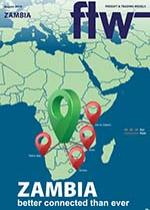There is a generation of 40-ish young lions who are becoming a force for economic change in Zambia. They are professionals in the private sector and government who experience daily the failures of the policies of the previous generation. What is frustrating them most is that government policy is standing in the way of Zambia once again having a growing and diversified economy. They see opportunities in the reindustrialisation of the country based on its central geographic location and its abundant natural resources. For them Zambia’s post-colonial history speaks for itself. Some of the current crop of elder leaders were in their teens in the 1970s when the government nationalised all the key sectors of Zambia’s economy, including the mines. Between 1974 and 1994 per capita income decreased by 50%, and Zambia has since become the 25th poorest country in the world. Reform was prompted by the end of the cold war. Without Russian support the government of Kenneth Kaunda had to invite the private sector back into the economy. It was also forced to the polls, losing the election to the Multi-Party Democracy (MMD) in 1991. Newly instated president Frederick Chiluba’s government took another 10 years to start privatising parastatals. This sparked a series of reforms that led to debt write-off in 2005. Zambia then had one of the world’s fastest growing economies for the 10 years up to 2014, with real GDP growth averaging 6.7% a year. Growth slowed from 2015 to 2017, due to falling copper prices, reduced power generation, and depreciation of the kwacha. The International Monetary Fund (IMF) forecasts that the economy will grow by around 3% in 2019, and is expected to drop to 2.5% by 2024. Foreign debt has again ballooned. One of the criticisms of 63-yearold president Edgar Lungu is that he started his political career in 1981, and will have seen first-hand the effects of government policy on the economy of the country. That includes the failure to wean the country of its dependence on copper to generate foreign exchange. Zambia has no control over the copper price, particularly since it has been overtaken by the Democratic Republic of Congo as Africa’s largest copper producer. The message is getting through. Under 50-year-old agriculture minister and farmer Micheal Katambo, the government is now pushing agricultural production, which it can be argued has more potential than the mining industry. Other younger members in key positions in Lungu’s cabinet include the new minister of housing and infrastructure development Vincent Mwale (41); and transport and communications minister Mutotwe Kafwaya (43). They were appointed in July this year. Richard Musuka, minister of mines and minerals since February 2018, is one year short of his 50th birthday, while Christopher Yaluma, the minister of commerce and industry, is a more mature 67. Older business leaders have seen it all – and work the system while squirrelling away enough for their retirement. But the young lions want to make their mark and to make a difference in the lives of ordinary Zambians by providing jobs. They are putting pressure on government to unlock the gates of opportunity by reducing red tape. Some of their stories of success, despite the challenges, are told in this special report. If the Zambian government has the courage to introduce the reforms needed then there will be many more – and across a broader range of industries. The Zambian logistics sector is modern, well organised and is managed largely by the 40-ish crowd. It has the means, the skills and the will to get the economy moving.
IMAGE


